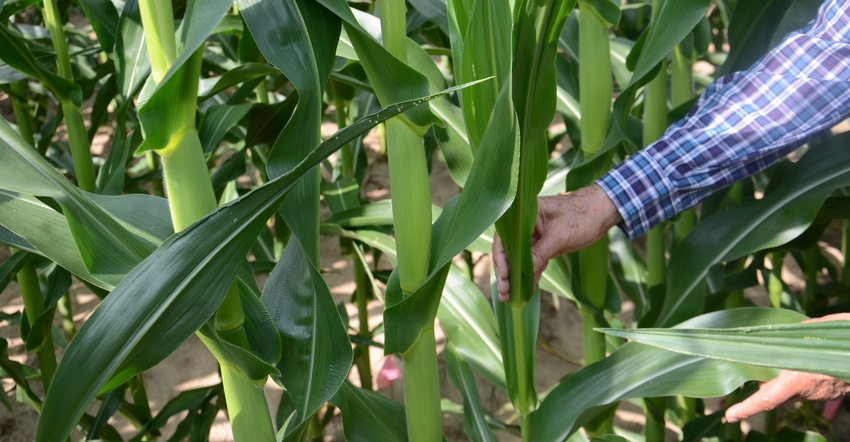
Strips of corn with bright-colored flags beside plants weren’t as rare a sight as you might think this spring. After Precision Planting and other companies pushed the value of uniform emergence at winter meetings, several people, including farmers and consultants, staked out their own 1/1,000-acre strips within fields to monitor emergence timing and potential impact of late-emerging plants.
The process is simple. Mark off 17 feet, 5 inches in 30-inch rows. That’s 1/1,000 of an acre. Place flags by seedlings that emerge the first day you see plants above ground. Return 24 hours later and repeat the process each day until all plants emerge. Stick a different color flag by plants that emerge on different days.
Dave Nanda is observing two locations where someone marked emergence with flags. Nanda, director of genetics for Seed Genetics Direct, says the impact won’t be known until plants mature this fall. However, he made midseason observations and has already seen effects related to plants not emerging at the same time.
Midseason report
In a field planted April 20, plants in the side-by-side 1/1,000-acre strips of adjacent rows took more than seven days to emerge. The weather turned cool and wet after planting. In fact, some plants were still emerging when a May 9 freeze that dipped to 27 degrees F occurred. Seedlings were small enough that they didn’t appear to be impacted by the freeze — at least not more than superficial damage.
When corn was just beginning to tassel, Nanda checked the flagged strips. “The only shorter plants emerged more than a week after the first plants emerged,” Nanda says. “Most plants emerged within the first couple of days, but there were stragglers.”
Nanda noticed one plant, which didn’t have a flag, was a couple of feet shorter and not ready to tassel. He later learned it didn’t have a flag because the operator stopped flagging at seven days. So, the plant emerged more than seven days after the first plants.
“I will be surprised if it produces an ear, or if it does, much of an ear,” Nanda says. “It couldn’t compete with the plants on either side.”
What typically happens, Nanda notes, is that the late-emerging plant acts like a weed, sucking up moisture and nutrients that could have gone to neighboring plants. If it winds up not producing an ear, then it returned nothing to yield for what it took away.
At a second location, planted in mid-May, plants in most rows emerged faster than corn planted April 20, and more uniformly. However, there were still some late-emerging plants, especially in a couple of rows. It appeared that even a two- to four-day delay could produce plants that may not be productive in some cases.
That’s more typical of what he would expect, Nanda says. While it’s too early to say for sure, it’s possible that since everything emerged slowly and was set back by a freeze, plants that emerged only a few days behind in the April-planted corn may have caught up.
“It will be interesting to evaluate these strips this fall,” Nanda concludes.
About the Author(s)
You May Also Like




